|
A Look Back at
Mother's Day
by Bob Brooke
"When I was knee
high to a duck, you paddled me without much luck! And when you thought I
had the chills, You stuffed me down with oils and pills! In spite of
which, my Mother dear Ė I love you better every year."
Ė 1920s Hallmark Mother's Day card
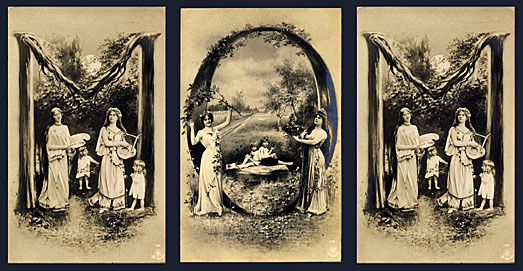
Leave it to Hallmark to
sum up the feelings of so many on Motherís Day. But the celebration
actually began back in ancient Greece when the Greeks held spring
activities in honor of Rhea, the Mother of the Gods. The Romans held a
similar celebration, the festival of Hilaria, in honor of the mother
goddess Cybele, some 250 years before Christ. The celebration, held on
the Ides of March (March 15) by making offerings in the temple of Cybele,
lasted for three days and included processions, games and masquerades.
They became notorious enough that the Roman Emperor banned the followers
of Cybele from Rome.
Early Christians
celebrated a festival on the fourth Sunday of Lent in honor of the
Virgin Mary, the Mother of Christ. The English took that festival one
step further and in the 17th-century celebrated Mothering Sunday, also
held on the fourth Sunday of Lent. During this time, many of England's
poor worked as servants and lived in the houses of their wealthy
employers. On Mothering Sunday, the wealthy gave their servants the day
off and encouraged them to return home and spend the day with their
mothers. This was a time when the faithful would return to their ďmother
churchĒóthe main church in the vicinity of their homeófor a special
service. Over time the Mothering Sunday tradition evolved into a more
secular holiday, and children would present their mothers with flowers
and a special fruit cake or fruit-filled pastry called a simnel.
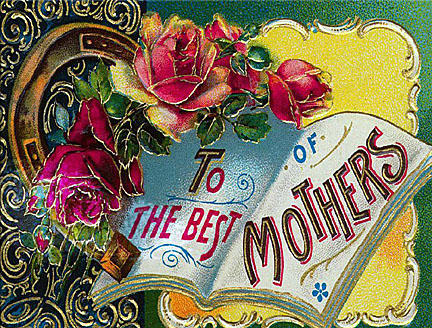 Julia
Ward Howe, a writer and poet who wrote the words to the Battle Hymn of
the Republic, first suggested the concept of Motherís Day in America.
Haunted by her experiences of the Civil War, Howe took on the cause of
peace. Howe suggested that June 2 be annually celebrated as Mothers Day
and should be dedicated to peace. She wrote a passionate appeal to women
and urged them to rise against war in her famous Mothers Day
Proclamation, written in Boston in 1870. She also initiated a Motherís
Peace Day observance on the second Sunday in June in Boston and
continued that for several years. Howe tirelessly championed the cause
of an official celebration of Mothers Day. Despite her best efforts, the
idea never caught on during her lifetime. Julia
Ward Howe, a writer and poet who wrote the words to the Battle Hymn of
the Republic, first suggested the concept of Motherís Day in America.
Haunted by her experiences of the Civil War, Howe took on the cause of
peace. Howe suggested that June 2 be annually celebrated as Mothers Day
and should be dedicated to peace. She wrote a passionate appeal to women
and urged them to rise against war in her famous Mothers Day
Proclamation, written in Boston in 1870. She also initiated a Motherís
Peace Day observance on the second Sunday in June in Boston and
continued that for several years. Howe tirelessly championed the cause
of an official celebration of Mothers Day. Despite her best efforts, the
idea never caught on during her lifetime.
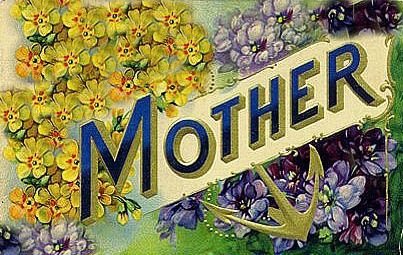 A
young Appalachian homemaker named Anna Jarvis, who had attempted to
improve sanitation during the Civil War through what she called Motherís
Day Work Clubs, influenced Howe. Though Jarvis never married and wasnít
a mother, she became known as the Mother of Motherís Day. She got the
inspiration of celebrating Mothers Day from her own mother, Mrs. Anna
Marie Reeves Jarvis, in her childhood. An activist and social worker,
Jarvis used to express her desire that someday someone must honor all
mothers, living and dead, and pay tribute to the contributions made by
them. A
young Appalachian homemaker named Anna Jarvis, who had attempted to
improve sanitation during the Civil War through what she called Motherís
Day Work Clubs, influenced Howe. Though Jarvis never married and wasnít
a mother, she became known as the Mother of Motherís Day. She got the
inspiration of celebrating Mothers Day from her own mother, Mrs. Anna
Marie Reeves Jarvis, in her childhood. An activist and social worker,
Jarvis used to express her desire that someday someone must honor all
mothers, living and dead, and pay tribute to the contributions made by
them.
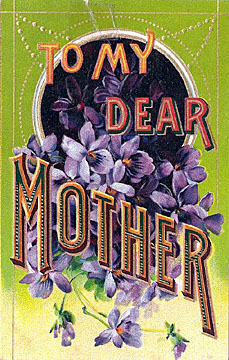 When
her mother died in 1905, Anna Jarvisí daughter, Ann, resolved to fulfill
her motherís desire of having a mothers day. To begin with, Ann sent
carnations, her motherís favorite flower, to St. Andrewís Methodist
Church in Grafton, West Virginia, where her mother taught Sunday school,
for a church service on the second Sunday of May in 1907. She felt the
carnations symbolized a motherís pure love. When
her mother died in 1905, Anna Jarvisí daughter, Ann, resolved to fulfill
her motherís desire of having a mothers day. To begin with, Ann sent
carnations, her motherís favorite flower, to St. Andrewís Methodist
Church in Grafton, West Virginia, where her mother taught Sunday school,
for a church service on the second Sunday of May in 1907. She felt the
carnations symbolized a motherís pure love.
In 1908, the US Congress rejected a proposal to make Mother's Day an
official holiday. Two years later, Ann Jarvis, along with her
supporters, wrote letters to people in positions of power, lobbying for
the official declaration of a Motherís Day holiday. Her efforts paid
off. By 1911, nearly every state celebrated Mother's Day. Some of them
officially recognized Mother's Day as a local holiday, the first being
West Virginia, Jarvis' home state. On May 8, 1914 President Woodrow
Wilson signed a Joint Resolution designating the second Sunday in May as
Mother's Day.
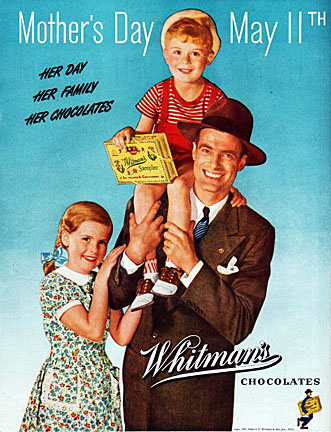 Although
Ann Jarvis was successful in founding Mother's Day, she became resentful
of the commercialization of the holiday. By the early 1920s, Hallmark
Cards and other companies had started selling Motherís Day cards. Jarvis
believed that the companies had misinterpreted and exploited the idea of
Motherís Day, and that the emphasis of the holiday was on sentiment, not
profit. As a result, she organized boycotts of Motherís Day, and
threatened to issue lawsuits against the companies involved. She argued
that people should appreciate and honor their mothers through
handwritten letters expressing their love and gratitude, instead of
buying gifts and cards. Jarvis protested at a candy makers' convention
in Philadelphia in 1923, and at a meeting of American War Mothers in
1925. By this time, carnations had become associated with Mother's Day,
and the selling of carnations by the American War Mothers to raise money
angered Jarvis, who was arrested for disturbing the peace. She spent the
latter part of her life trying to remove the holiday she created from
the calendar. Although
Ann Jarvis was successful in founding Mother's Day, she became resentful
of the commercialization of the holiday. By the early 1920s, Hallmark
Cards and other companies had started selling Motherís Day cards. Jarvis
believed that the companies had misinterpreted and exploited the idea of
Motherís Day, and that the emphasis of the holiday was on sentiment, not
profit. As a result, she organized boycotts of Motherís Day, and
threatened to issue lawsuits against the companies involved. She argued
that people should appreciate and honor their mothers through
handwritten letters expressing their love and gratitude, instead of
buying gifts and cards. Jarvis protested at a candy makers' convention
in Philadelphia in 1923, and at a meeting of American War Mothers in
1925. By this time, carnations had become associated with Mother's Day,
and the selling of carnations by the American War Mothers to raise money
angered Jarvis, who was arrested for disturbing the peace. She spent the
latter part of her life trying to remove the holiday she created from
the calendar.
By the 1920s, major greeting card publishers like Hallmark, Carlton and
American Greetings were producing Mother's Day cards by the thousands.
However, an illustration of a stylish Art Deco mother smoking a
cigarette may have been acceptable in the 1920s, but it certainly
wouldnít be appropriate today.
<
Back to More Special Features
Next Article > |
